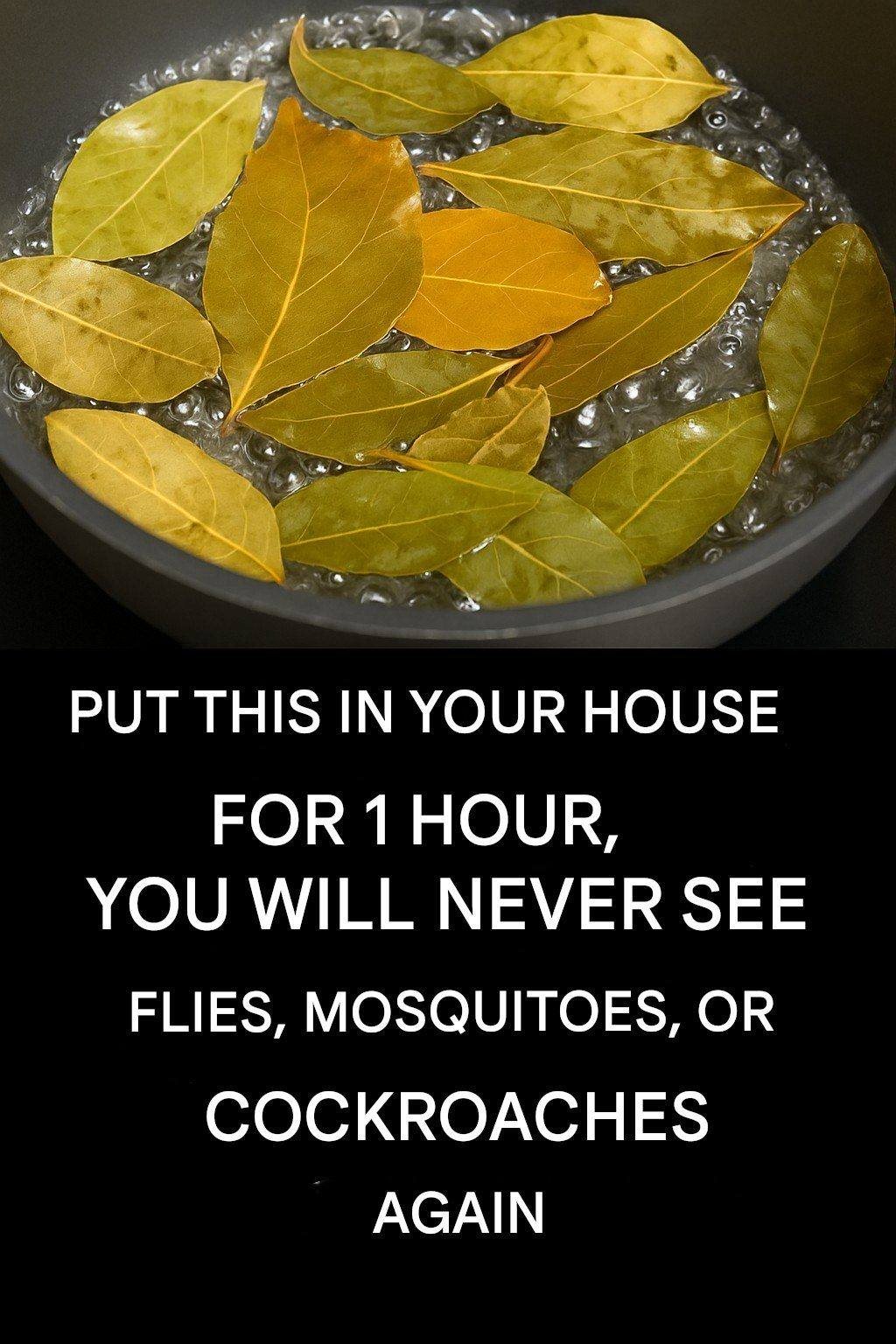Say Goodbye to Flies, Mosquitoes, and Cockroaches by Boiling These Leaves – The Ultimate Natural Repellent Guide
Pest control is something every household battles with. Flies, mosquitoes, and cockroaches not only create discomfort but also bring serious health risks. Traditional chemical repellents may work, but they often come with harmful side effects for your family and pets. That’s where natural, DIY pest repellents come into play — safe, cost-effective, and surprisingly powerful.
One such powerful remedy that’s been gaining popularity is a natural insect-repellent made by boiling specific leaves and mixing everyday ingredients you already have in your home. This method doesn’t just mask the problem — it targets the root, keeping your home pest-free without toxic fumes or sprays.
🦟🚫 Why You Should Ditch Chemical Sprays
Before we dive into the recipe, let’s talk about why natural solutions are superior:
- No harmful toxins: Commercial repellents often contain DEET, pyrethroids, and other chemicals that may irritate skin, eyes, or airways.
- Pet and child-safe: Natural blends are generally safe for homes with pets or small children.
- Affordable and accessible: Most ingredients used in these natural sprays are already in your pantry.
- Eco-friendly: You reduce chemical waste that can affect the environment.
🌿 The Power of Leaves and Natural Ingredients
The real secret behind this natural repellent lies in aromatic, pest-repelling leaves and oils. Let’s explore how each ingredient contributes to a pest-free home.
✅ Bay Leaves
Bay leaves contain compounds like eucalyptol, which has natural insect-repellent properties. When boiled, these oils are released into the air, creating a strong scent that insects hate.
- Effective against: Cockroaches, flies, and mosquitoes
- Acts as: Airborne repellent and nest deterrent
- Added benefit: Naturally deodorizes the room
✅ White Vinegar
White vinegar has a strong acetic acid smell that acts as a powerful insect repellent, especially for ants, flies, and roaches. It also cleans surfaces, reducing traces that pests follow.
✅ Vegetable Oil
Vegetable oil helps the solution stick to surfaces, acting as a barrier layer for insects. It suffocates smaller pests and discourages them from nesting.
✅ Sugar + Baking Powder
This duo works as a trap:
- Sugar attracts pests.
- Baking powder, when ingested by cockroaches, reacts with their digestive systems, often killing them naturally.
✅ Shampoo
Shampoo helps the oil and water emulsify, allowing even distribution of all ingredients. It also contributes a fragrance that’s pleasant to humans but unappealing to insects.
✅ Cloves
Cloves contain eugenol, another strong insect-repelling compound. Boiled with bay leaves, they release a potent vapor that flies and mosquitoes avoid.
✅ Nails (Iron)
While not essential for all users, iron nails may contribute a mild chemical reaction when boiled with vinegar, which can enhance the solution’s potency. Some traditions include them for symbolic pest-banishing reasons.
🧪 DIY Natural Insect Repellent Recipe
🛒 Ingredients:
- 1 small handful (15) bay leaves
- 10 whole cloves
- 1 cup white vinegar
- 1/2 cup vegetable oil
- 1/2 cup regular shampoo (non-toxic)
- 5 tablespoons sugar
- 1 tablespoon baking powder
- 1 cup water
- 10 metal nails (optional)
- 1 empty 2-liter plastic bottle or spray bottles
🧑🍳 Instructions – Step-by-Step
🔥 Step 1: Make the Leaf Infusion
- In a large saucepan, add 1 cup of water.
- Add bay leaves, cloves, and nails (if using).
- Bring to a boil and simmer for 10–15 minutes.
- Let cool for 10 minutes, then strain the liquid.
🧴 Step 2: Mix the Repellent Base
In a large bowl or directly in your 2-liter bottle:
- Add the strained leaf mixture.
- Stir in vinegar, vegetable oil, shampoo, sugar, and baking powder.
- Shake or stir thoroughly until well combined.
🧂 Step 3: Storage and Use
- Pour the final mixture into spray bottles or small open containers.
- Spray in corners, under sinks, around windows, doors, and garbage bins.
- Replace or refresh every 3–5 days.
📍 Where to Use It
- Kitchen cabinets and under the sink
- Behind and under the fridge or oven
- Windowsills and door frames
- Bathrooms and laundry rooms
- Outdoor patios, balconies, and garages
⚠️ Precautions
- Do a spot test on wood or porous surfaces before spraying.
- Store mixture away from pets and children.
- Replace containers regularly to prevent odor buildup.
- Do not spray on food surfaces directly — use it around areas instead.
🔄 Boost the Effectiveness – Pro Tips
- Keep your home dry and clean: Cockroaches and mosquitoes thrive in moisture.
- Seal entry points: Use caulk or door sweeps to block gaps.
- Take out trash daily: Especially organic waste that attracts flies.
- Use mesh screens: Keep windows open safely with screens in place.
💬 What Users Are Saying
“This recipe worked better than any store-bought spray I’ve used. The flies disappeared in 24 hours, and the kitchen smells great!” – 🌟🌟🌟🌟🌟
“I use this every summer now. Way cheaper and safer than foggers or sprays with chemicals. And it works!” – 🌟🌟🌟🌟🌟
🧼 Alternative Natural Insect Repellents
Looking for more ways to keep pests away? Here are some alternatives:
- Lemon and eucalyptus oil spray
- Lavender essential oil and vinegar blend
- Citronella candles and plants
- Baking soda + lemon for ant control
- Boiled garlic water spray for mosquitoes
These can be rotated or combined with your bay leaf solution for maximum impact.
🏁 Final Thoughts: Nature Is the Best Exterminator
You don’t need harsh chemicals or expensive services to enjoy a clean, pest-free home. With natural ingredients like bay leaves, vinegar, and oil, you can create a long-lasting, family-safe, and effective pest repellent in under 30 minutes.
Say goodbye to flies, mosquitoes, and cockroaches the smart, healthy way — by letting nature do the work.
